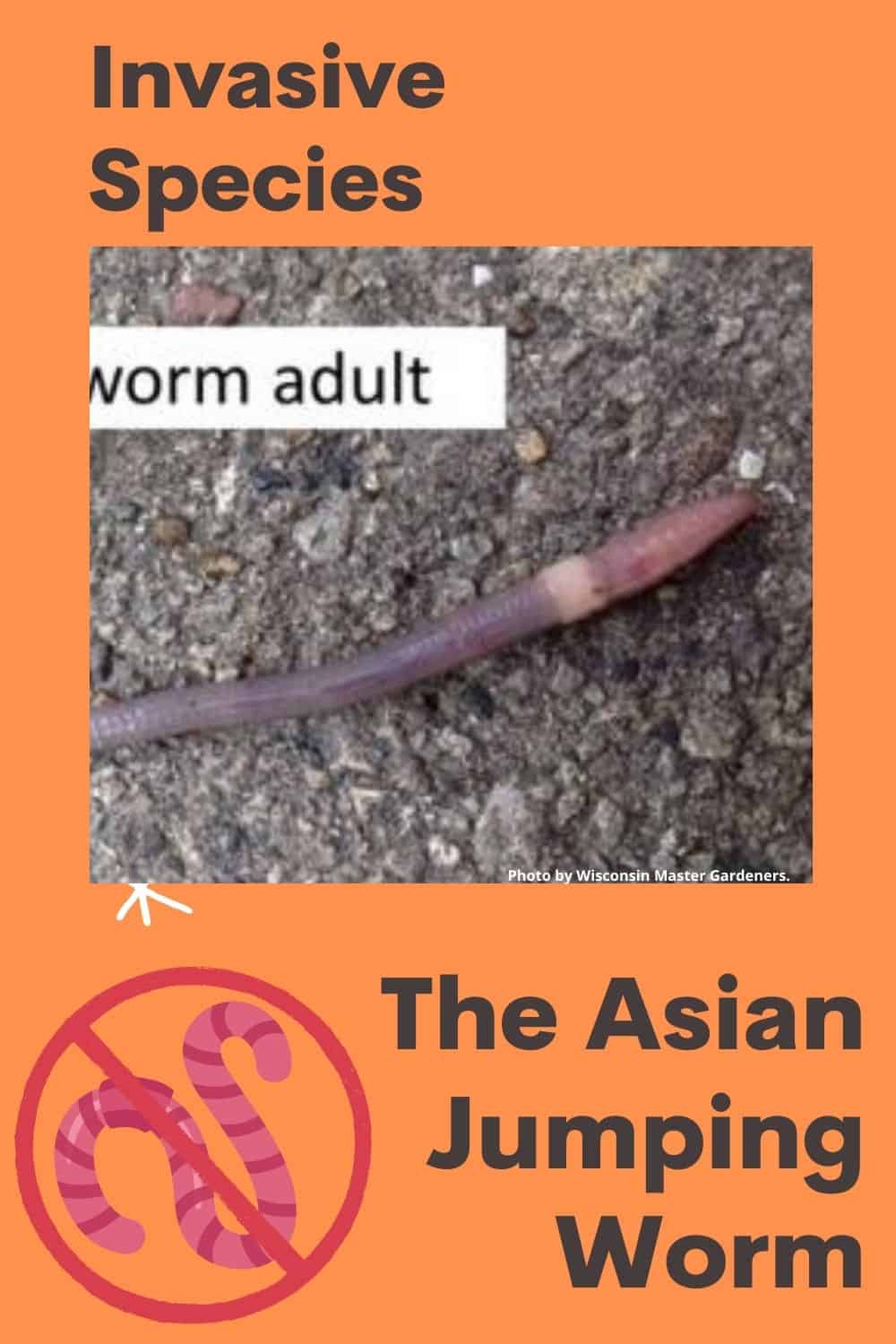
Jeffery Jago is a expert in horticulture and worm breeding. With a background in plant cultivation
Last Updated on May 3, 2021 by Jeffery Jago
It’s called the Asian jumping worm, and it is a type of invasive pest that has been spotted in various locations across the United States. It can cause significant damage to crops, and some people are reporting seeing this worm in their garden. If you want to learn more about this worm, or what steps you should take to get rid of them from your home or yard then keep reading!
What is an Asian jumping worm?
Asian jumping worms, or just Jumping Worms, Amynthas spp, are a species of worms in the family of Megascolecidae. Much like other nasty species of insect, they native to eastern Asia.
Identifying: The adult worm is light brown in color and has a size around 8-inches long. They’re known as “jumpers” because their bodies are designed to contract when stimulated for short distances at high speeds. It appears as though they are jumping away, and is entirely unexpected if you are out looking for regular native species of worm.
Their clitellum is much whiter/lighter than your average native, similarly-sized worm, such as the Canadian or European nightcrawlers.
Their movement across the soil when agitated is much like a sand snake, where they continually dash in an ‘s’ like shape, even reaching high speeds as quick as a snake.
If you’re trying to identify it inside a group of other native species, simply gliding your fingers across them all, or touching each one individually will be enough to make a jumping spider spring out, Try not to have a heart attack when it happens, it can be quiet unexpected even when you’re expecting it.
How did they get here?
It has been speculated that they were smuggled in on soil from online ordered of potted plants and flowers. The soil is usually imported from a region of Asia with an established population. But that’s not the only entry point they may have had.
Since the worms are popular as fishing bait, they may have been smuggled in deliberately to be distributed among fishermen who will buy them and not know what they’re doing. Warning: Jumping worms are a prohibited invasive species in most of North America. This is not just an afterthought, this species of worm is awful!
Wow, everyone’s so serious about this species right? So how about we get into why that is.
What makes jumpingworms bad
Compared to other earthworms, instead of creating nutrients and organic matter as they dig through the soil, this worm has an appetite for it. They’ll actually eat all of these nutrients that other worms would have left behind, as well as the nutrients that were already present in the soil.
This causes plants to starve, and the soil to become infertile. They also damage roots and root systems leaving behind only what looks like munched on coffee grounds.
This also has the secondary effects of altering the way water can be retained, or even flows in the soil. This has radical effects on the surrounding areas and can lead to flooding, or drought.
In east Asia, this species of worm has an environment that’s adapted for it to live. It has its own predators to hunt it specifically and keep it under control. Plants will have become more resilient to them.
However, in North America, as an invasive species, the local environment hasn’t had thousands or more years to adapt to the worm’s destructive power, and it can easily damage or destroy local ecosystems.
Prevention is the key when it comes to dealing with the jumping worm
There are things each of us can do to help control the problem.
First, if you’re in a forest or other wild area and notice worms on the ground, keep an eye out for them as you walk through that area. If you see worms on the surface, You should kill them. There are some other things you can do to prevent them from further spreading:
- Thoroughly clean tools, shoes, and vehicles when moving from one site to another.
- If your going from property to property (as a landscaper for example) be sure to clean all your tools beforehand. A quick squirt with a hose is better than nothing. The same for shovels and even boots if you’re doing a lot of in dirt work.
- Do not buy mulch, compost, or other organic material that has not been heated and cured to a high enough temperature. Jumping worm egg casings do not survive temperatures over 104°F and should be destroyed.
- If you are a vermicomposter, do not buy jumping worms for use in your bins.
- If you are a fisherman, stick to fake jumping worm bait rather than the real thing. It’s illegal, don’t buy it.
If you would like to read more about the jumping work, check out these news articles about the invasive species progress.
https://www.washingtontimes.com/news/2021/apr/27/invasive-asian-jumping-crazy-worms-threaten-forest/

